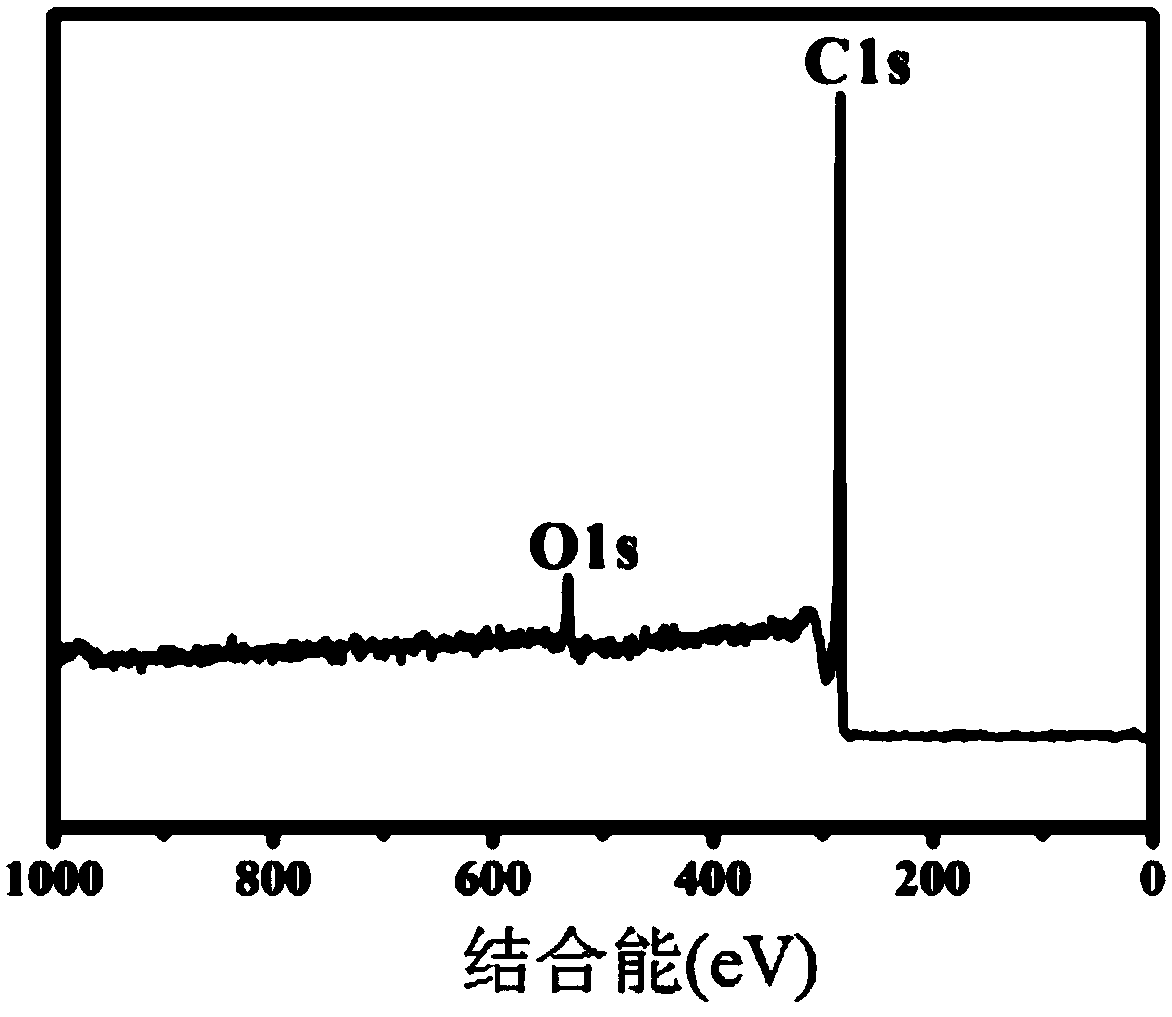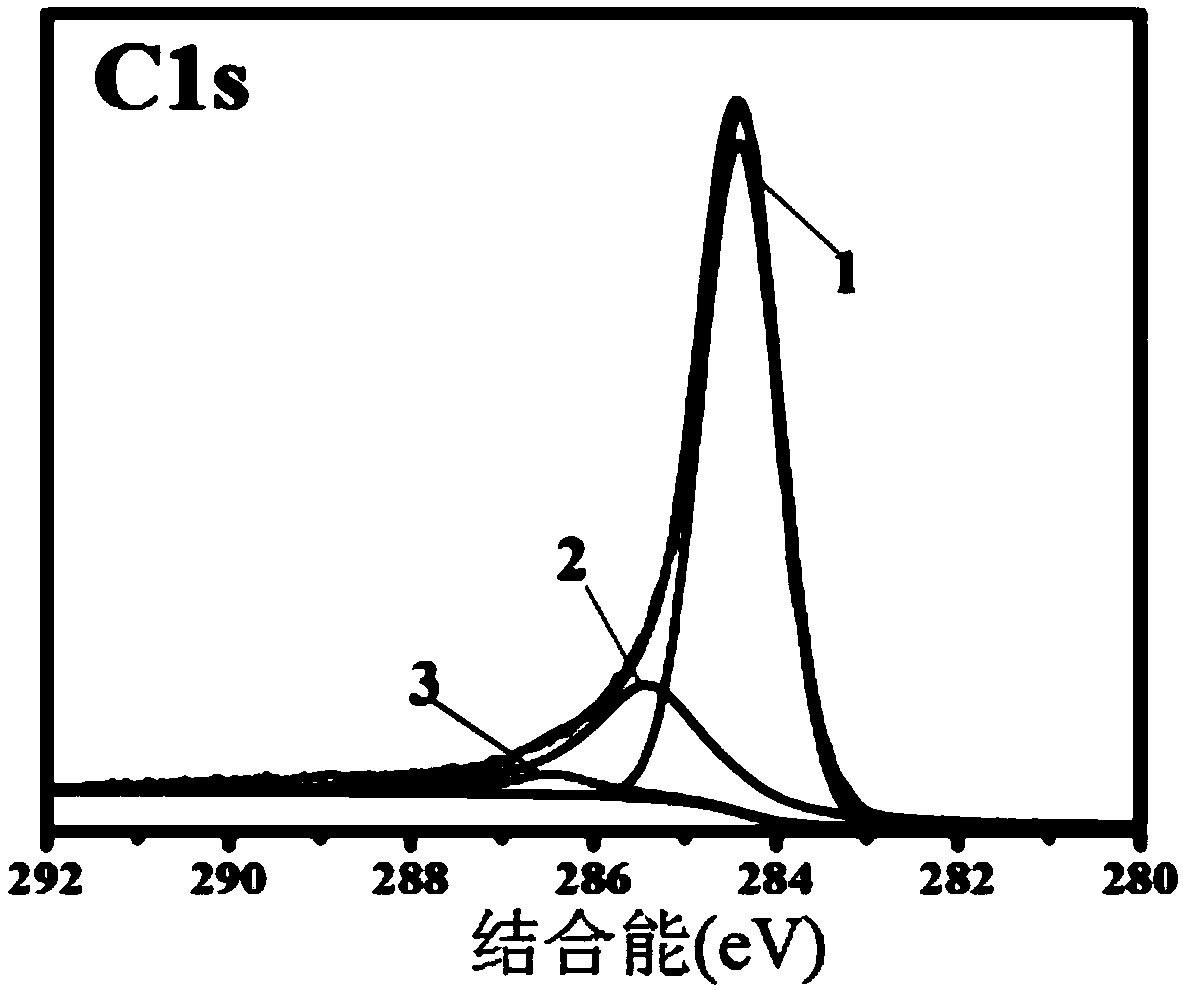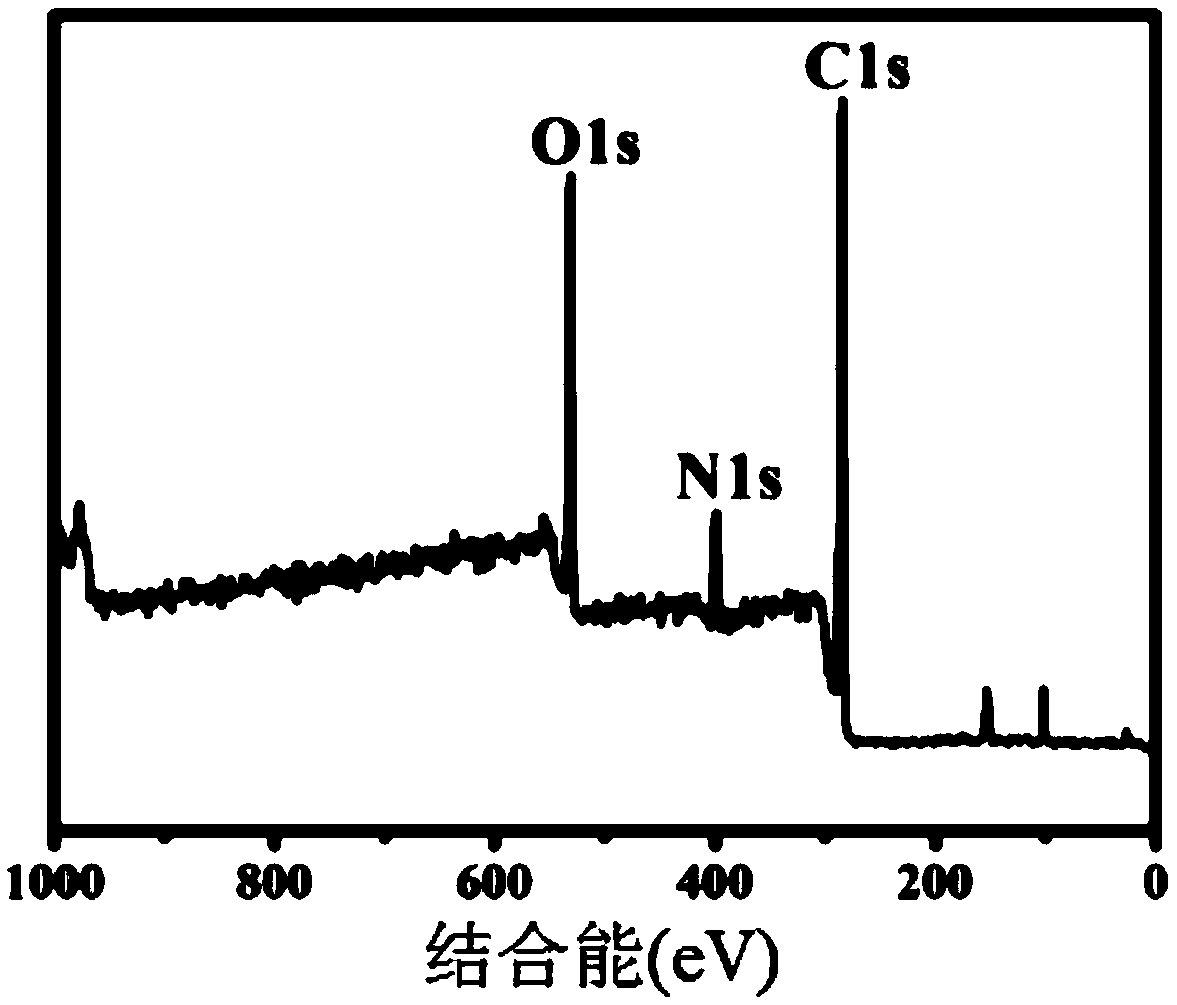Method for grafting hydroxyl terminated hyperbranched polymer to carbon fiber surface
A technology of hyperbranched polymer and grafted hydroxyl sealing technology, which is applied in the fields of carbon fiber, fiber treatment, textiles and papermaking, etc., can solve the problems of restricting modified carbon fiber, toxic synthetic raw materials, complex synthetic process, etc., and achieve improved interface properties, infiltration Improvement of sex and adhesiveness and reduction of environmental pollution
- Summary
- Abstract
- Description
- Claims
- Application Information
AI Technical Summary
Problems solved by technology
Method used
Image
Examples
specific Embodiment approach 1
[0052] Embodiment 1: This embodiment is a method for grafting hydroxyl-terminated hyperbranched polymers on the surface of carbon fibers, which is completed in the following steps:
[0053] 1. Preparation of hydroxyl-terminated hyperbranched polymers:
[0054] ①. Add isophorone diisocyanate and N,N-dimethylacetamide into a glass container to obtain isophorone diisocyanate solution; then place the glass container containing isophorone diisocyanate solution in In an ice-water bath at 0°C to 5°C;
[0055] The volume ratio of the mass of isophorone diisocyanate described in step 1. to N,N-dimethylacetamide is (6g~12g):50mL;
[0056] ②. Add tris to N,N-dimethylacetamide, and then ultrasonically mix for 10-20 minutes to obtain a tris solution;
[0057] The volume ratio of the mass of tris in step 1 ② to N,N-dimethylacetamide is (3g~6g):50mL;
[0058] ③. Stir the isophorone diisocyanate solution in a glass container in an ice-water bath at 0°C to 5°C in step ①, at a stirring speed...
specific Embodiment approach 2
[0091]Specific embodiment two: the difference between this embodiment and specific embodiment one is: the volume ratio of the quality of isophorone diisocyanate and N,N-dimethylacetamide described in step one 1. is (10g~12g ): 50mL. Other steps are the same as in the first embodiment.
specific Embodiment approach 3
[0092] Specific embodiment three: the difference between this embodiment and specific embodiment one or two is: the mass ratio of the tris hydroxymethylaminomethane described in step 2. to N,N-dimethylacetamide is (5g~6g): 50mL. Other steps are the same as those in Embodiment 1 or 2.
PUM
| Property | Measurement | Unit |
|---|---|---|
| shear strength | aaaaa | aaaaa |
| shear strength | aaaaa | aaaaa |
| shear strength | aaaaa | aaaaa |
Abstract
Description
Claims
Application Information
 Login to View More
Login to View More - R&D
- Intellectual Property
- Life Sciences
- Materials
- Tech Scout
- Unparalleled Data Quality
- Higher Quality Content
- 60% Fewer Hallucinations
Browse by: Latest US Patents, China's latest patents, Technical Efficacy Thesaurus, Application Domain, Technology Topic, Popular Technical Reports.
© 2025 PatSnap. All rights reserved.Legal|Privacy policy|Modern Slavery Act Transparency Statement|Sitemap|About US| Contact US: help@patsnap.com



